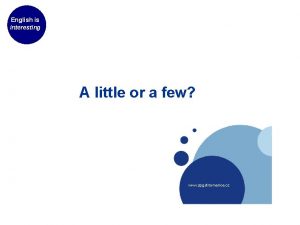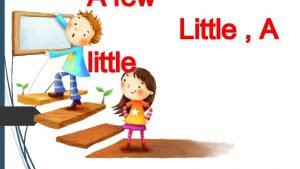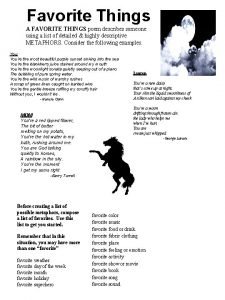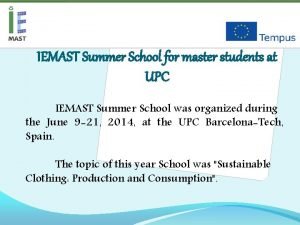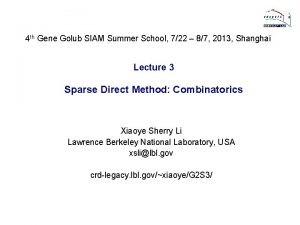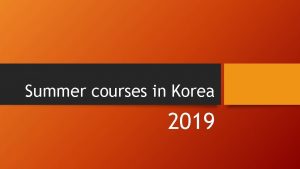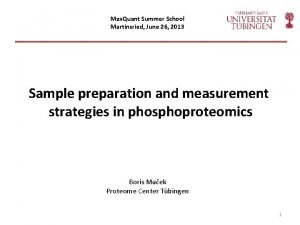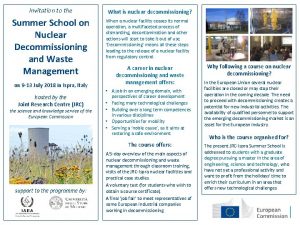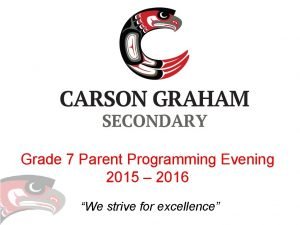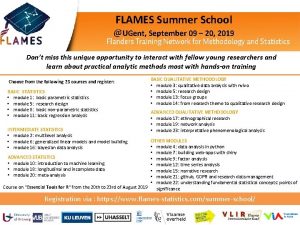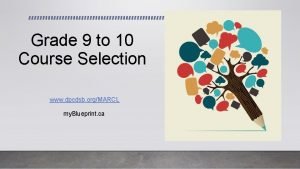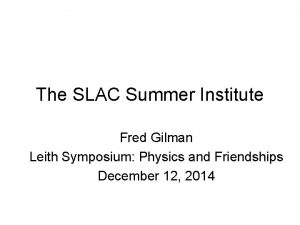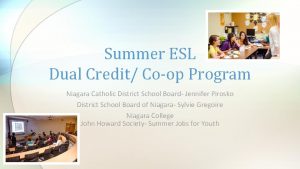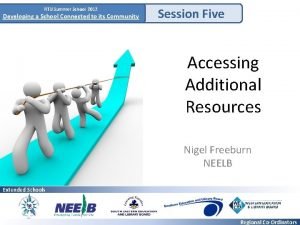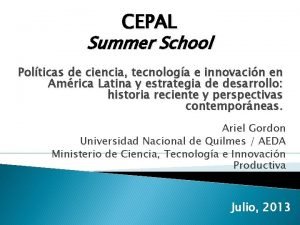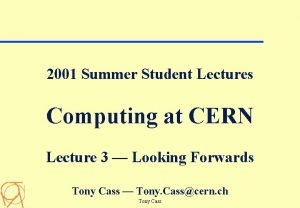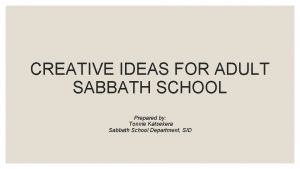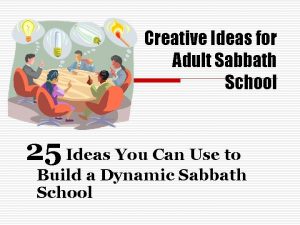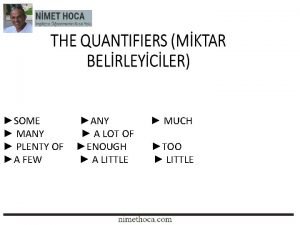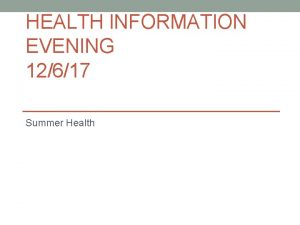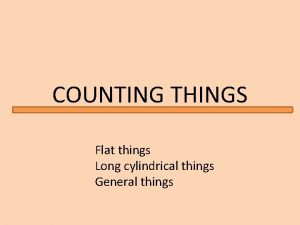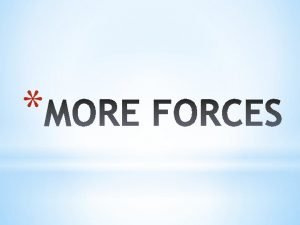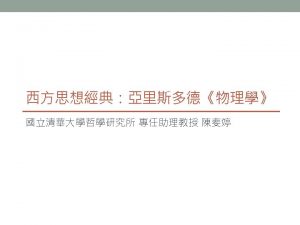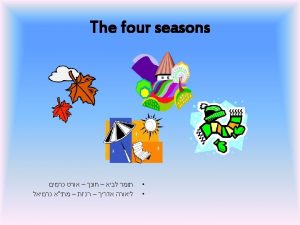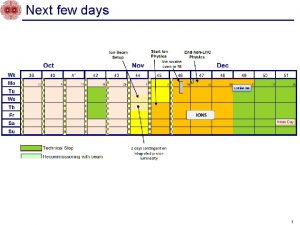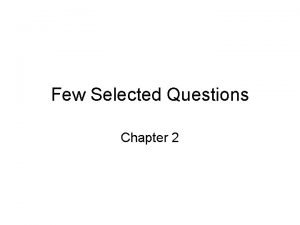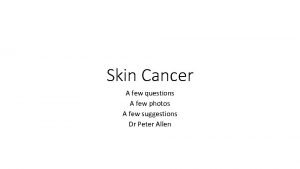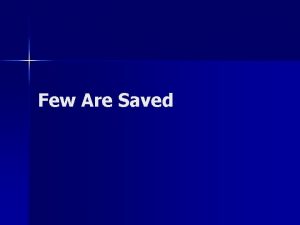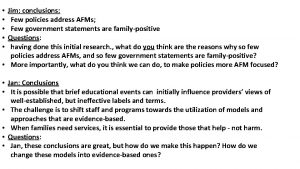Welcome to Health Summer School A Few things







































































- Slides: 71

Welcome to Health Summer School

A Few things about Your Teacher Mr. K • Teaching at Troy for almost 14 years • Born and raised in So. Cal • High School Attended: Magnolia -Water Polo & Swimming -Baseball • Favorite Hobbies: Sport card collection & memorabilia, hiking, fishing, and traveling • Meals: Good Old fashion BBQ • Favorite TV shows: House

Get to Know People Activity • Meet in your table groups and ask the following questions: -Names (all people in your group) -Family members -Favorite: food, movies, places to go, stores **What is the best comedy you have ever seen -See which group can come up with the best joke

Things to Remember for this Class • • • Attendance is critical (20 min = loss of an hour) 10 hrs lost you will be dropped from the class Tests will given every other day (morning) Multiple chapters will be covered Intro Questions (IQ’s) will be everyday which journals your work • All work & assignments will be turned in the day you take the test. (no late work accepted) • The class will include discussions, videos, guest speakers, group work, presentations

Tentative Schedule Week #1: 7/5 Ch. 1, 2, 3 7/6 Ch. 4, 5, 6 7/7 Ch. 7, 8, 9 Week #2: 7/11 7/12 7/13 7/14 7/5 – 7/7 Ch. 10, 11, 25 7/11 – 7/14 Ch. 12, 13 Ch. 21, 22, 23 Internet Safety & Birth Control

Introductory Questions #1 1. A state of well-being comes from a balance of three things. Name these three aspects. 2. Does “being healthy” mean that you never get sick? Briefly explain your response. 3. What is the key to “wellness”? 4. Where do most people fall on the health continuum on Pg. 5? Why is the case? 5. After looking @ the list of lifestyle factors that can promote good health on pg. 6, write three factors that you can easily work on this week. 6. What are the two main goals for “Healthy People 2010”?

Chapter 1 Living a Healthy Life

Unit #1: A Healthy Foundation • Includes topics from Chapters 1 -3 • Define what it means to be “Healthy” • We will identify and discuss: – Behaviors – Health risks – Decision Making and Goal Setting – How to build character – Consumer choices – Factors in the environment: media, friends, family – Managing problems

Myth or Fact? Teens need more sleep than adults do.

Myth or Fact? FACT Because you are still developing, your body needs more rest than fully developed adults.

Myth or Fact? Being an effective communicator can improve your health.

Myth or Fact? FACT Communicating effectively can help reduce unnecessary stress that can result from misunderstandings, petty arguments, etc.

Myth or Fact? The health decisions you make as a teen have little impact on your health as an adult.

Myth or Fact? MYTH Teens who practice healthful behaviors (choosing nutritious foods and getting regular physical activity, for example) lower the risk of many diseases, both now and in the future.

Myth or Fact? Two 10 -minute walks provide nearly the same health benefits as a continuous 20 -minute walk.

Myth or Fact? FACT

Myth or Fact? Water is a nutrient.

Myth or Fact? FACT

Myth or Fact? Setting goals can only help you achieve long-term accomplishments, such as establishing a career.

Myth or Fact? MYTH Goal setting can help people achieve both shortand long-term goals

Myth or Fact? Acne flare-ups are a result of eating chocolate and greasy foods.

Myth or Fact? MYTH Food plays no role in triggering acne or making it worse.

Myth or Fact? Tanning beds are safe because they use UVA light, which doesn’t cause burns.

Myth or Fact? MYTH!! UVA damages skin and increases the risk of cancer. There is no such thing as a safe tanning bed.

Myth or Fact? All stress is negative and should be avoided.

Myth or Fact? MYTH Some stress energizes people and helps them strive to reach goals.

Myth or Fact? The relationships you have with family, friends and peers do not affect your physical health.

Myth or Fact? MYTH Relationships do affect physical health, both positively and negatively.

Look at the picture on pages 2 -3 • Describe the teenagers • What makes them look healthy? • What decisions do you think they’ve made that had positive effects on their health? • Quick. Write – “Last week”

Your Health & Wellness (pg. 4 -5) • “The combination of physical, mental/emotional, and social well-being” – It encompasses ALL aspects of your life – It just means being the best you can at any given time • Strive for a high degree of Wellness • Health Continuum – Dynamic vs. static – Changes can be both gradual and sudden—FOR EXAMPLE? • Look at Figure 1. 1 pg. 5, where on this continuum do you want to be?


Promoting You Health (pg. 6 -7) • Wellness is a result of responsible decisions • Lifestyle Factors (habits): – these can affect health and happiness, but also your longevity (how long you live) • Prevention: – Practicing health and safety habits to remain free of disease and injury

Promoting You Health (pg. 6 -7) • Health education: – The providing of accurate health information to help people make healthy choices • Healthy People 2010 • Goals of HP 2010: – 1. Increase the quality & years of life – 2. Remove health differences that result from factors such as gender, race, education, disability and location. • Individuals, families and communities must work together to achieve these goals.

Health Literacy (pg. 8 -9) • Health Literacy: – A person’s capacity to learn about & understand basic health information & services & use these resources to promote his/her health & wellness • You also need to be: – A critical thinker – A responsible, productive citizen – A self-directed learner – An effective communicator

Introductory Questions #1 1. A state of well-being comes from a balance of three things. Name these three aspects. 2. Does “being healthy” mean that you never get sick? Briefly explain your response. 3. What is the key to “wellness”? 4. Where do most people fall on the health continuum on Pg. 5? Why is the case? 5. After looking @ the list of lifestyle factors that can promote good health on pg. 6, write three factors that you can easily work on this week. 6. What are the two main goals for “Healthy People 2010”?

Introductory Questions #2 1. 2. 3. Name three elements that make up the health triangle. What happens when one side receives too much or too little attention? Being physically healthy involves many factors. Name five factors. Matching the factors with each statement. Making/keeping friends P: Physical Enjoying challenges M/E: Mental getting proper medical checkups S: Social Getting adequate sleep Avoiding harmful substances Communicating with others Eating nutritious meals

Introductory Questions #2 cont’d 4. What role does your culture play in regards to your health? 5. The way you view situations is referred to as your _____ which can be positive or negative. 6. How can the media effect your health? 7. Name six important influences on your health. (pg. 12) Why are the last three more important according to the text? 8. What role does your culture play in regards to your health? 9. The way you view situations is referred to as your _____ which can be positive or negative.


Lesson 2: Promoting a Healthy Lifestyle Health Triangle Social • How you get along with others • Ability to make & keep friends • Seeking & lending support • Respecting & caring for yourself & others Physical • Energy for daily activities & to cope with stress • Resist disease • Prevent injury • Adequate sleep • Eating well • Good hygiene • Regular medical checkups • Avoiding harmful substances • Feelings about yourself • Enjoy challenges • Mistakes = opportunities to grow & change • Stand up for your beliefs/values • Deal w/frustrations Mental/Emotional

Health Triangle • Keeping a balance is crucial • What happens to social if mental/emotional is weak? • ALL are equally important!

Influences on your health (pg. 12 -13) • Heredity • Environment – Physical – Social – Culture • • Attitude Behavior Media Technology

Introductory Questions #3 1. What is the first step in becoming responsible for your own health? What’s the second step? 2. What did the results of the CDC survey show regarding teens and risk behaviors? (pg. 18) 3. Give two examples of a cumulative risk. 4. Why is abstinence the most effective way to avoid harmful consequences? 5. Read the section “Eye on the Media” and think about the questions asked. Name a popular show that depicts teens in the best way and another show that depicts teens in the worst way. ***Which is the best and worst show out there? ? ?

Lesson 3: Your Behavior & Reducing Health Risks • Risk behaviors: – Actions that can potentially threaten your health or the health of others • For example?

Cumulative Risks & Consequences • Cumulative risks: – Related risks that increase in effect with each added risk • Abstinence: – Avoiding harmful behaviors • Tobacco • Alcohol • Other drugs – Consequences include: disease, accidents, death – Sexual activity • Unplanned pregnancy & premature parenthood • STDs • Emotional problems


Introductory Questions #4 1. List three effective strategies for effective communication. (TND listening activity) 2. Write three ways you can reinforce your decision to say “NO”. 3. The process of ending a conflict is through and. 4. Name the five strategies suggested to overcome the negative effects of stress. 5. How are internal influences different from external influences? Provide an example for each. 6. What are the most reliable sources for information? 7. Why is advocacy an important skill to have?



Introductory Questions #5 1. Write your goals for the “Quick Start Q’s” on pg. 33. (Lesson 2) 2. How many steps are there to the decision making process? Which step(s) do you or other people typically miss or don’t consider significant? 3. Every goal involves. If you never reach your goal what is the best thing for you to do?

Chapter 2 Building Health Skills and Character

Building Health Skills (Lesson 1) • Interpersonal skills (289) • Health literacy involves effective communication or interpersonal communication – Clearly say what you mean – Be aware of how you say something – Be a good listener • Refusal Skills (30) – – Say NO in a firm voice Explain why Suggest alternatives Use appropriate body language – Leave if necessary

Building Health Skills • Conflict Resolution Skills – Calm down and think – Speak calmly and listen, ask questions when appropriate – Use a polite tone and resolve peacefully – Find solutions where no one loses respect

Self-Management Skills • Practicing healthful behaviors (pg. 31) – Keeping the health triangle balanced • Managing stress – Learn to manage your time and relieve stress • Accessing Information (pg. 32) – Making healthful choices means finding and recognizing trustworthy information • • Parents, guardians, etc. Library resources Reliable Internet sources Print sources by health professionals • Government agencies • Advocacy – Take action to influence others • Help inform others • Publicly support health causes


Introductory Questions #6 1. How would you define a person’s character? (Lesson 3) 2. Name the four core ethical values that demonstrate a person with “good character”. See pgs. 38 -39) 3. List the six traits that are typical of a person with good character. 4. When are your core ethical values and character learned? What are three things you can do to develop your character. 5. Name three places that you can demonstrate good character which can have a positive effect on others. ***Health Lab Activity Characteristics of Friends***

Making Responsible Decisions & Setting Goals (Lesson 2) • The Decision Making Process 1. 2. 3. 4. 5. 6. State the situation List the options Weigh the possible outcomes Consider values Make a decision and act on it Evaluate the decision

Lesson 2 continued • Setting personal health goals (pg. 34 -5) – Helps shape your life in positive ways • Short-term goal • Long-term goal – Both require planning • Achieve Your Goals (pg. 36) – Create an action plan • • • Set a goal List the steps Identify sources Set a time frame Establish checkpoints to measure progress • Reward yourself for reaching the goal

Building Character: Lesson 3 • Good character – Demonstrates core ethical values • Traits of good character – – – Trustworthiness Respect Responsibility Fairness Caring citizen • Developing Your Character – Stand up for your beliefs – Have and be a role model – Volunteer (school, community, etc. ) • Demonstrate character – Make a difference at home, school and your community – Demonstrate: • Responsibility • Respect • Tolerance of differences

Quick. Write • On a separate sheet of paper complete the following sentence and write at least one fully developed paragraph about the person: – “A person with good character is…”

Friend Characteristics Honest Trustworthy. Caring. Compassionate. Loyal. Creative. Helpful. Energetic. Ambitious. Insightful. Witty- Cheerful. Helpful. Respectful. Fair Enthusiastic. Generous. Responsible. Outgoing-

Chapter 3 (pgs. 46 -70)

Introductory Questions #7 1. What factors can influence you on what products to buy? Which factor has the strongest impact on you? 2. When you comparison shop what should you typically look for? 3. Why is it important to read the labels on products you are considering to purchase? 4. What are some of the dangers of shopping online? 5. What are the six basic rights you have as a consumer?



Introductory Questions #8 1. How is a primary care physician different from a specialist? 2. Name the six types of health care facilities that are out there. 3. Why is Health insurance important to have? 4. What does HMO, PPO, and POS stand for? 5. Which plan is most expensive and least expensive to you if you need to use it? 6. Next slide---------------

Introductory Questions #9 6. Matching Ex. of care facilities: -Terminally ill patients -Treats those with alcohol and drug problems -Home like setting for low risk child birth -Aides the elderly that require help with daily activities -Use of a medical specialist many miles away 7. 8. A. Birthing Centers B. Assisted Living C. Hospice D. Telemedicine E. Drug treatment center Name three important things you can do before your next medical appointment. Before leaving and taking medication what are some questions you should ask the pharmacist?

Introductory Questions #10 1. What are the two types of products commonly susceptible to health fraud? 2. How is malpractice defined in your text? Why is a second opinion always recommended for big medical decisions? 3. After looking at the “Real Life Application” section, what three things are pointed out in the letter presented which we should pay close attention to? 4. If you are unable to resolve a problem with a product, name three groups you can get help from.

Lesson #4 • A List of Agencies that work to protect your health and you can contact if you ever have a problem.



Review for Test #1 (Ch. 1 -3) • Practice tests for Ch. 2 and Ch. 3 • Do the End of Chapter Questions: – Chapter 1 – Chapter 2 – Chapter 3 (Pg. 24) (Pg. 44) (Pg. 70) Quest. #1 -11 Quest. #1 -10 Quest. #1 -11 **Assemble Assignment Packets **50 questions Tomorrow morning
 Little and few
Little and few Little a
Little a Fill in a little or a few
Fill in a little or a few Complete the sentences use these words
Complete the sentences use these words Favorite things poem
Favorite things poem Summer school lodi unified
Summer school lodi unified Crescenta valley high school graduation 2021
Crescenta valley high school graduation 2021 Assignment in spanish
Assignment in spanish I hope you had a good summer vacation
I hope you had a good summer vacation Wise men three clever are we
Wise men three clever are we Venn diagram of living things and nonliving things
Venn diagram of living things and nonliving things Sensitivity life process
Sensitivity life process Ivc summer classes for high school students
Ivc summer classes for high school students Ducksters
Ducksters Slam summer school
Slam summer school La sapienza summer school
La sapienza summer school Event management summer school
Event management summer school Upc tempus
Upc tempus Harvard study abroad
Harvard study abroad Pps summer school
Pps summer school Exotic beam summer school
Exotic beam summer school Purdue summer start
Purdue summer start Gene golub summer school
Gene golub summer school Kimberly summer school
Kimberly summer school Summer school 2013
Summer school 2013 Uct summer school
Uct summer school Cern summer school
Cern summer school кpi
кpi Snu summer school
Snu summer school Fluid intelligence examples
Fluid intelligence examples Wacqt summer school
Wacqt summer school Jtg summer school
Jtg summer school Demokritos summer school
Demokritos summer school Maxquant summer school 2021
Maxquant summer school 2021 Invitation to summer school
Invitation to summer school Huntsville city schools summer reading
Huntsville city schools summer reading Carson graham summer school
Carson graham summer school Flames summer school
Flames summer school Sharcnet summer school
Sharcnet summer school Carpathian summer school of physics
Carpathian summer school of physics Santa fe institute summer school
Santa fe institute summer school Complex systems summer school
Complex systems summer school Belgrade summer school
Belgrade summer school Nice summer school
Nice summer school Fhbdf
Fhbdf Skku summer
Skku summer Blueprint dpcdsb
Blueprint dpcdsb Summerschools.suttontrust
Summerschools.suttontrust Slac summer school
Slac summer school Niagara catholic summer school
Niagara catholic summer school Rtu summer school
Rtu summer school Leysin summer school
Leysin summer school Imperial university summer school
Imperial university summer school Summer school cepal
Summer school cepal Alpbach summer school 2019
Alpbach summer school 2019 Cern summer school lectures
Cern summer school lectures Visegrad summer school
Visegrad summer school Fermilab summer school
Fermilab summer school Welcome to secondary school
Welcome to secondary school Welcome back your school missed you
Welcome back your school missed you Sabbath school attendance record
Sabbath school attendance record Creative sabbath school programs
Creative sabbath school programs Exchange student letter
Exchange student letter Welcome to your senior year of high school
Welcome to your senior year of high school Todays sabbath lesson
Todays sabbath lesson Welcome performance in school
Welcome performance in school Welcome back to school in spanish
Welcome back to school in spanish Good morning welcome back
Good morning welcome back Why are there few examples of totem poles from before 1900?
Why are there few examples of totem poles from before 1900? A lot of hangi cümlelerde kullanılır
A lot of hangi cümlelerde kullanılır Food quantifiers
Food quantifiers A lot of vs much many
A lot of vs much many
